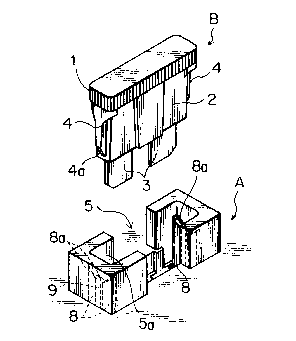Some of the information on this Web page has been provided by external sources. The Government of Canada is not responsible for the accuracy, reliability or currency of the information supplied by external sources. Users wishing to rely upon this information should consult directly with the source of the information. Content provided by external sources is not subject to official languages, privacy and accessibility requirements.
Any discrepancies in the text and image of the Claims and Abstract are due to differing posting times. Text of the Claims and Abstract are posted:
| (12) Patent: | (11) CA 2051188 |
|---|---|
| (54) English Title: | FUSE BOX FOR BLADE-TYPE FUSE |
| (54) French Title: | BOITE A FUSIBLES POUR FUSIBLES DU TYPE A LAME |
| Status: | Expired and beyond the Period of Reversal |
| (51) International Patent Classification (IPC): |
|
|---|---|
| (72) Inventors : |
|
| (73) Owners : |
|
| (71) Applicants : |
|
| (74) Agent: | ROBIC AGENCE PI S.E.C./ROBIC IP AGENCY LP |
| (74) Associate agent: | |
| (45) Issued: | 1996-05-28 |
| (22) Filed Date: | 1991-09-11 |
| (41) Open to Public Inspection: | 1992-03-13 |
| Examination requested: | 1991-09-11 |
| Availability of licence: | N/A |
| Dedicated to the Public: | N/A |
| (25) Language of filing: | English |
| Patent Cooperation Treaty (PCT): | No |
|---|
| (30) Application Priority Data: | ||||||
|---|---|---|---|---|---|---|
|
A fuse box has a fuse cavity for receiving the
body of a blade type fuse having blade-like male terminals
projecting from the body into an insertion direction of the
blade type fuse. The body of blade type fuse has opposed
ends extending into the insertion direction and a side rib
provided on each of the opposed ends and extending into the
insertion direction. The fuse cavity has opposed walls for
receiving therebetween the opposed ends of the blade type
fuse when the blade type fuse is inserted. The fuse cavity
also has two pairs of second ribs on the opposed walls, each
pair being positioned to define a receiving groove there-
between for receiving the side rib of the blade type fuse.
Note: Claims are shown in the official language in which they were submitted.
Note: Descriptions are shown in the official language in which they were submitted.

2024-08-01:As part of the Next Generation Patents (NGP) transition, the Canadian Patents Database (CPD) now contains a more detailed Event History, which replicates the Event Log of our new back-office solution.
Please note that "Inactive:" events refers to events no longer in use in our new back-office solution.
For a clearer understanding of the status of the application/patent presented on this page, the site Disclaimer , as well as the definitions for Patent , Event History , Maintenance Fee and Payment History should be consulted.
| Description | Date |
|---|---|
| Time Limit for Reversal Expired | 2010-09-13 |
| Letter Sent | 2009-09-11 |
| Inactive: IPC from MCD | 2006-03-11 |
| Grant by Issuance | 1996-05-28 |
| Application Published (Open to Public Inspection) | 1992-03-13 |
| All Requirements for Examination Determined Compliant | 1991-09-11 |
| Request for Examination Requirements Determined Compliant | 1991-09-11 |
There is no abandonment history.
| Fee Type | Anniversary Year | Due Date | Paid Date |
|---|---|---|---|
| MF (patent, 6th anniv.) - standard | 1997-09-11 | 1997-08-07 | |
| MF (patent, 7th anniv.) - standard | 1998-09-11 | 1998-08-05 | |
| MF (patent, 8th anniv.) - standard | 1999-09-13 | 1999-07-20 | |
| MF (patent, 9th anniv.) - standard | 2000-09-11 | 2000-08-16 | |
| MF (patent, 10th anniv.) - standard | 2001-09-11 | 2001-08-17 | |
| MF (patent, 11th anniv.) - standard | 2002-09-11 | 2002-08-16 | |
| MF (patent, 12th anniv.) - standard | 2003-09-11 | 2003-08-21 | |
| MF (patent, 13th anniv.) - standard | 2004-09-13 | 2004-08-19 | |
| MF (patent, 14th anniv.) - standard | 2005-09-12 | 2005-08-05 | |
| MF (patent, 15th anniv.) - standard | 2006-09-11 | 2006-08-08 | |
| MF (patent, 16th anniv.) - standard | 2007-09-11 | 2007-08-08 | |
| MF (patent, 17th anniv.) - standard | 2008-09-11 | 2008-08-11 |
Note: Records showing the ownership history in alphabetical order.
| Current Owners on Record |
|---|
| YAZAKI CORPORATION |
| Past Owners on Record |
|---|
| MAMORU ARAKI |
| MASAAKI SUGIYAMA |